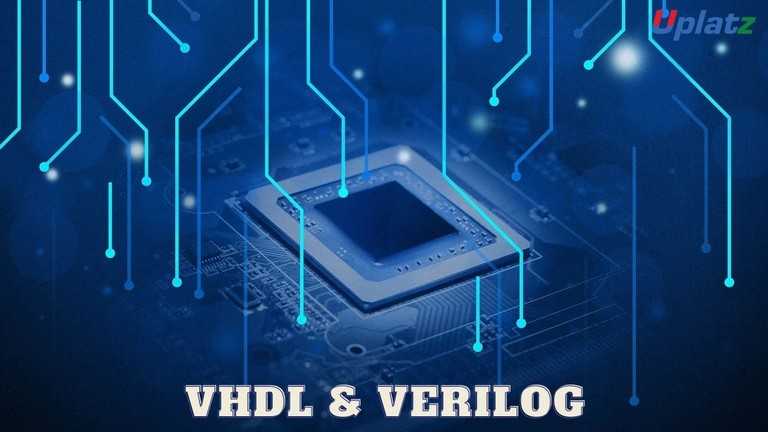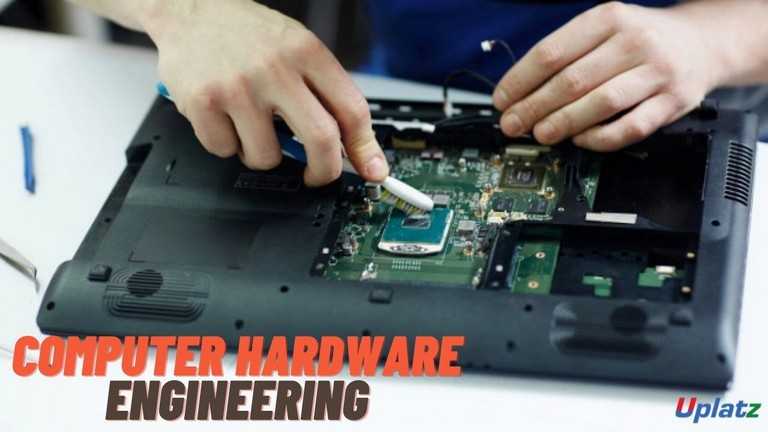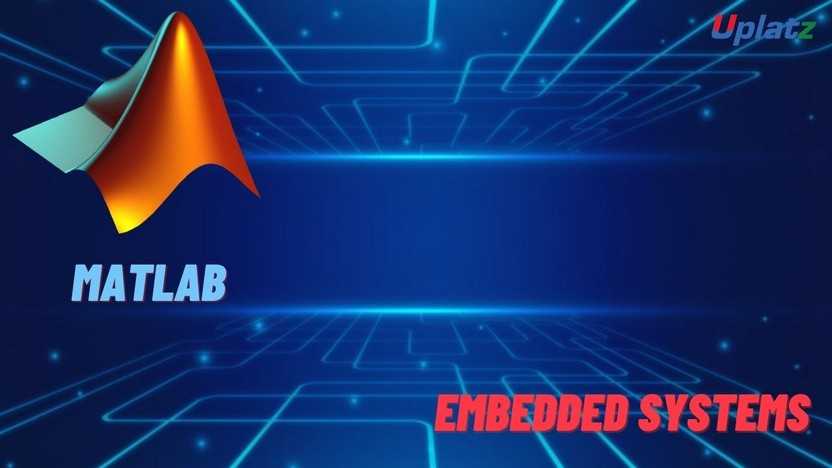VLSI - PLC - Microcontrollers - Assembly Language
Learn CMOS, VLSI, SCADA, Ladder Diagram. Grasp PLC basics & PLC programming, Microcontrollers, MSP430 Microcontroller, Assembly Language fundamentals.Preview VLSI - PLC - Microcontrollers - Assembly Language course
Price Match Guarantee Full Lifetime Access Access on any Device Technical Support Secure Checkout Course Completion Certificate 93% Started a new career
BUY THIS COURSE (
93% Started a new career
BUY THIS COURSE (GBP 12 GBP 29 )-
 100% Got a pay increase and promotion
100% Got a pay increase and promotion
Students also bought -
-

- Digital System Design with VHDL & Verilog
- 10 Hours
- GBP 12
- 88 Learners
-

- Computer Hardware Engineering
- 10 Hours
- GBP 12
- 760 Learners
-

- Embedded Systems and MATLAB Programming
- 30 Hours
- GBP 12
- 1501 Learners

VLSI (Very Large Scale Integration) designing is the process that involves the creating of Integrated Circuits. VLSI involves the integration of very small circuits on boards and dies the size of a coin (1 rupee). There can be millions and millions of transistors, capacitors and other electronic components, along with their related connections, routings and wiring. There are several steps involved in this making, IC design and verification, Prototyping, SoC Verification, and the Backend design. Then it is ready to proceed further for the fabrication and testing.
A PLC (Programmable Logic Controller) is an industrial digital computer designed for the control of manufacturing processes or robotic devices where reliability control, simple programming and fault diagnosis is necessary. They were originally built to replace electromechanical relay systems in industrial automation. Automation is one of the world's most basic and reliable technologies. It requires some effort to learn because automation information has to be updated on a regular basis. One should be able to establish the specific I/O card configuration, power supply requirements, and safety precautions, among other things. To become an Automation, Engineer, capable of creating miracles, one must practise numerous workouts and hone troubleshooting skills. The entire procedure, from programming to interfacing, should be repeated several times.
A Microcontroller is a small integratd circuit that governs a certain operation in an embedded system. On a single chip, a microcontroller has a CPU, memory, and input/output (I/O) peripherals. Microcontrollers, also known as embedded controllers or microcontroller units (MCUs), are found in a variety of devices, including automobiles, robotics, office equipment, medical devices, mobile wireless transceivers, vending machines, and home appliances. They are basically simple microscopic personal computers (PCs) with no complicated front-end operating system, meant to operate minor characteristics of a bigger component (OS).
The Assembler Language is the symbolic programming language that lies closest to the machine language in form and content. The assembler language is useful when you need to control your program closely, down to the byte and even the bit level. You must write subroutines for functions that are not provided by other symbolic programming languages, such as COBOL, Fortran, or PL/I .The assembler language is made up of statements that represent either instructions or comments. The instruction statements are the working part of the language and are divided into the following three groups: Machine instructions, Assembler instructions, Macro instructions.
Uplatz provides this detailed course on VLSI, PLCs, Microcontrollers, and Assembly Language.
This course will provide you a deep understanding of the technologies and elements used with VLSI, microcontrollers, PLCs, Assembly Language along with with real-world coding experience as well as hands-on project work using ARM-based microcontrollers. You'll learn how to design embedded software applications and apply software configuration management. The course concludes with demonstration of a project in which you will design your own memory-manipulation build system and firmware. This course will teach you how to write and debug bare-metal firmware microcontrollers using hardware tools.
Course/Topic - VLSI - Microcontrollers - PLC - Assembly Language - all lectures
-
In this lecture session we learn about CMOS technologies and also talk about features of CMOS technology in microcontrollers assembly language.
-
In this lecture session we learn about how CPU works and also talk about AVR microcontrollers.
-
In this lecture session we learn about VLSI introduction and also talk about features of microcontrollers assembly language.
-
In this lecture session we learn about what register is and also talk about different types of registers in brief.
-
In this lecture session we learn about the basics of PLC and also talk about features of the basics of programmable logic controllers.
-
In this lecture session we learn about status registers in VLSI and also talk about features of status registers and accumulator flags.
-
In this lecture session we learn about PLC programming and also talk about features of PLC programming in brief.
-
In this lecture session we learn about the use of SRAM as a stack and also talk about features of SRAM in VLSI.
-
In this lecture session we learn about ladder diagrams in VLSI microcontrollers in brief and also talk about assembly language.
-
In this lecture session we learn about BIT manipulations and also talk about how to convert BCD coded digits in brief.
-
In this lecture session we learn about SCADA in VLSI microcontrollers and also talk about supervisory control and data acquisition system security.
-
In this lecture session we learn about hardware multiplication of 8 by 8 bit binary and also talk about features of hardware multiplication.
-
In this lecture session we learn about assembly languages for intel based computers in brief and also talk about features of assembly languages for intel based computers.
-
In this lecture session we learn about decimal fraction and also talk about features of decimal fraction in brief.
-
In this lecture session we learn about assembly language fundamentals in brief and also talk about features of assembly languages fundamentals.
-
In this lecture session we learn about how we convert decimals to binary floating point numbers in assembled languages.
-
In this lecture session we learn about procedures in Assembly Language and also talk about link library overview in brief.
-
In this lecture session we learn about classical dividing by 10 with a counting loop.
-
In this lecture session we learn about jumps based on specific flags and also talk about features of string encryption programs.
-
In this lecture session we learn about properties of the egg timer with AT mega 8515 and also talk about features of egg timer in brief.
-
In this lecture session we learn about integer arithmetic in VLSI assembly languages in brief.
-
In this lecture session we learn about properties of RGB - Uhr mit ATmega 18 and also talk about features of hardwares.
-
In this lecture session we learn about advanced procedures in arrays and also talk about features of advanced procedures in brief.
-
In this lecture session we learn about features of the spotlight with ATiny 13 and also talk about factors of spotlight.
-
In this lecture session we learn about structures and macros and also talk about features of structures and macros in brief.
-
In this lecture session we learn about features of the signal generator with ATmega and network and also talk about functions of signal generators.
-
In this lecture session we learn about 32 bit windows programming and also talk about features of 32 bit windows programming.
-
In this lecture session we learn about pin description and also learn how we write a code.
-
In this lecture session we learn about high level languages interface and 16- bit MS DOS programming and also talk about functions of high level languages.
-
In this lecture session we learn about what is USART and also talk about how we use USART in VLSI microcontroller in brief.
-
In this lecture session we learn about DISK usage in VLSI microcontroller and also talk about the function of disk usage in brief.
-
In this lecture session we learn about AVR DO in ATMEL microcontroller and also talk about features of AVL.
-
In this lecture session we learn about introduction to microcontrollers in VLSI and also talk about features of microcontrollers in brief.
-
In this lecture session we learn about if else statements and also talk about factors of LOOP in programming.
-
In this lecture session we learn about the MSP430 microcontroller in VLSI and also talk about different types of microcontrollers.
-
In this lecture session we learn about declare and initialize values in microcontrollers and also talk about initializing one or more successive bits.
-
In this lecture session we learn about time analysis of the loop in VLSI microcontrollers and also talk about features of MSP.
-
In this lecture session we learn about MSP430 the routine and also talk about performance of code in brief.
-
In this lecture session we learn about databases online and also talk about virtually all new part data sheets in brief.
-
In this lecture session we learn about computer systems in VLSI microcontrollers and also talk about features of computer systems.
-
In this lecture session we learn about how CPU works and also talk about AVR microcontrollers.
-
In this lecture session we learn about what register is and also talk about different types of registers in brief.
-
In this lecture session we learn about status registers in VLSI and also talk about features of status registers and accumulator flags.
-
In this lecture session we learn about the use of SRAM as a stack and also talk about features of SRAM in VLSI.
-
In this lecture session we learn about BIT manipulations and also talk about how to convert BCD coded digits in brief.
-
In this lecture session we learn about hardware multiplication of 8 by 8 bit binary and also talk about features of hardware multiplication.
-
In this lecture session we learn about decimal fraction and also talk about features of decimal fraction in brief.
-
In this lecture session we learn about how we convert decimals to binary floating point numbers in assembled languages.
-
In this lecture session we learn about classical dividing by 10 with a counting loop.
-
In this lecture session we learn about properties of the egg timer with AT mega 8515 and also talk about features of egg timer in brief.
-
In this lecture session we learn about properties of RGB - Uhr mit ATmega 18 and also talk about features of hardwares.
-
In this lecture session we learn about features of the spotlight with ATiny 13 and also talk about factors of spotlight.
-
In this lecture session we learn about features of the signal generator with ATmega and network and also talk about functions of signal generators.
-
In this lecture session we learn about pin description and also learn how we write a code.
-
In this lecture session we learn about what is USART and also talk about how we use USART in VLSI microcontroller in brief.
-
In this lecture session we learn about AVR DO in ATMEL microcontroller and also talk about features of AVL.
-
In this lecture session we learn about if else statements and also talk about factors of LOOP in programming.
1) Recognize the proper methods for handling and programming MCU peripherals.
2) For your microcontroller, create peripheral drivers.
3) Understand the whole driver development process for GPIO, SPI, I2C, and USART from the ground up.
4) Learn Prototyping APIs, writing peripheral driver headers, and implementation.
5) Recognize the various IC production techniques.
6) Using Lambda-based design principles, express the layout of a basic MOS circuit.
7) For subsystem design, use Lambda-based design principles.
8) Differentiate between different FPGA architectures. CO5: Create a Verilog HDL-based application.
9) Modeling a digital system with Hardware Description Language concepts.
-
CMOS Technology
-
VLSI Introduction
-
Basics of Programmable Logic Controller (PLC)
-
PLC Programming
-
Ladder Diagram
-
Supervisory Control and Data Acquisition (SCADA)
-
Assembly Language for Intel based Computers
-
Assembly Language Fundamentals
-
Procedures
-
Conditional Processing
-
Integer Arithmetic
-
Advanced Procedures, Strings, Arrays
-
Structures and Macros
-
32-bit Windows Programming
-
High Level Language Interface and 16-bit MS DOS Programming
-
Disk Usage
-
Introduction to Microcontrollers
-
MSP430 Microcontroller
-
AVR Microcontroller
-
Computer Systems
The VLSI - Microcontrollers - PLC - Assembly Language Certification ensures you know planning, production and measurement techniques needed to stand out from the competition.
A year ago I made a plc (programmable logic controller) using a microchip pic microcontroller. It's a 16 bit digital input and output programmable logic controller. Plc programming is done using a standard ladder logic language.
A PLC is a larger-scale microcontroller. It's an industrial digital computer that's ruggedized and adapted to facilitate tough manufacturing processes. Its most common applications include: Assembly lines.
The five most popular PLC Programming Languages are Ladder Logic, Structured Text, Function Block Diagrams, Sequential Flow Charts and Instruction Lists. These methods of programming are available on most platforms. However, certain PLCs will restrict user access to certain languages unless the user pays a premium.
Uplatz online training guarantees the participants to successfully go through the VLSI - Microcontrollers - PLC - Assembly LanguageCertification provided by Uplatz. Uplatz provides appropriate teaching and expertise training to equip the participants for implementing the learnt concepts in an organization.
Course Completion Certificate will be awarded by Uplatz upon successful completion of the VLSI - Microcontrollers - PLC - Assembly Language Online course.
The VLSI - Microcontrollers - PLC - Assembly Language Draws an average salary of $130,000 per year depending on their knowledge and hands-on experience.
Microcontrollers and PLCs can perform many of the same functions, such as mathematical operations, logic and data processing, and controlling devices. However, microcontrollers are significantly less expensive to obtain.
PLCs are widely used in a variety of industries because they're fast, easy to operate and are considered easy to program. PLCs can be programmed in several ways, from ladder logic, which is based on electromechanical relays, to specially adapted programming languages of BASIC and C, to name a few
A PLC Programmer is one of the highest paying jobs in the PLC engineering industry and manufacturing sector.
Note that salaries are generally higher at large companies rather than small ones. Your salary will also differ based on the market you work in.
Embedded Software Engineer.
Senior FW Engineer.
MCU/MPU Embedded SW manager M/F.
Question 1. What Is Plc?
Answer :
PLC are solid state members of the computer family using integrated circuit instead of electromechanical devices to implement control functions.
Question 2. What Are The Two Basic Sections Of Plc?
Answer :
- CPU
- The Input/Output interface system
Question 3. Common Plc Programming Languages?
Answer :
- Ladder logic
- Functional Block diagram
- Sequential Function Chart
Question 4. How To Select A Plc (selection Criteria )?
Answer :
- Cost of Hardware and Software
- Reliability Flexibility Scalability
- Ease of database configuration
- Graphics development
- Interlocks and batch processing
- Integration of high level application
Question 5. What Is Sinking Input And Sourcing Input/output?
Answer :
- Sinking input / output provides a grounded connection to the load.
- Sourcing input / output provides to the load.
Question 6. What Are The Different Types Of Modules Used In Plc?
Answer :
- Digital input
- Digital Output
- Analog input
- Analog output
- Pulse input
- Communication module
- Cpu
Question 7. Explain What Are Different Components In Plc?
Answer :
1. Input Interface
2. Memory Section
3. Central Processing Unit (CPU)
4. Programmable Language
5. Programming tool
6. An output Interface
Question 8. Explain Advantages Of Plcs Than Hard Wired Relay?
Answer :
PLCs are highly reliable, easily programmable, Small and Inexpensive, PLCs can be designed with the communication capabilities so they can converse with the local or remote computer, They can sustain in robust environment less maintenance.
Question 9. Explain What Is The Programmable Language Used In Plc?
Answer :
The general language program consists of Ladder Diagrams. Relay logic control scheme is represented in Ladder diagrams. Alternative languages uses Boolean representation of these control schemes as base of the computer representation.
Question 10. Explain What Does Central Processing Unit (cpu) Of Plc Consists?
Answer :
CPU is the brain of the system and consists of
- Microprocessor: To carryout arithematic and logical operations.
- Memory: The area in the CPU in which the information is stored and reterived.
- Power Supply: The electrical supply that converts the ac voltage to various DC operating voltages.









